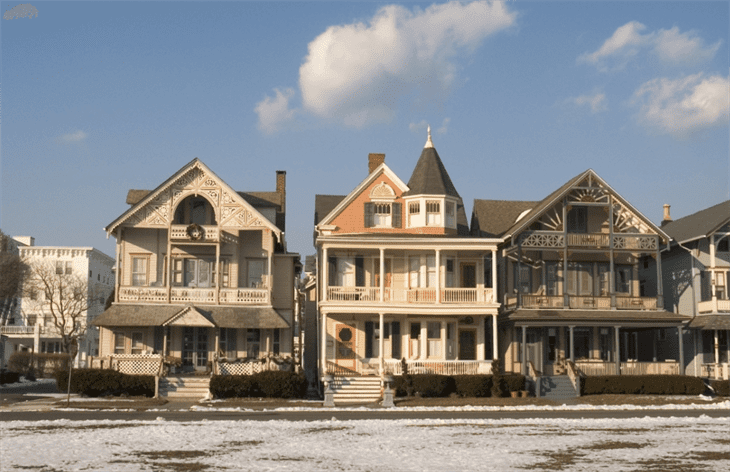
It’s a snow day, with as much as 10 inches falling on parts of New Jersey. Plenty of accidents, speed restrictions, school closings, and power outages have been reported around the region. See this article for a list of speed restrictions, school closings/delays, and inch counts.
Getting hit with snow is always bittersweet. It causes accidents, stalls work and travel, and takes up a lot of our time and resources to remove it; however, it is one of the most beautiful things of nature and provides endless enjoyment and memories.
What you might not know, however, is that snow accumulation on your roof or lack thereof is a good indicator of the energy efficiency of your home and roof. The best thing would be for the snow to naturally melt on your roof from the sun rather than from the heat that is escaping your house through the roof.
Uneven melting and accumulation of ice on your eaves indicate an insulation and/or ventilation problem. So YES, that is why snow on your roof is a good sign. What you don’t want to see is snow melting and then freezing on your eaves causing ice dams.
Tips and Insights: 5 Top Causes of Water Leaks in Homes and Ways to Fix
ICE DAMS
Ice dams form around the edges or eaves of your roof and are caused by melted snow/ice from your roof that gets refrozen when it reaches the edges/eaves. This occurs in homes that have ventilation and/or insulation problems and can be harmful to your home, cause leaks, and be dangerous to anyone unlucky enough to be standing underneath the dangling ice.
If you notice ice dams accumulating around the edges of your roof, you know that there is something that needs to be fixed. Ignoring the problem could lead to leaks inside your home, stained or soaked insulation, damaged gutters and shingles, moisture accumulation, and structural damage to your interior and exterior walls.
Leaks occur when melted ice and snow reaches the ice dam along your eaves and gets pushed back behind your shingles:
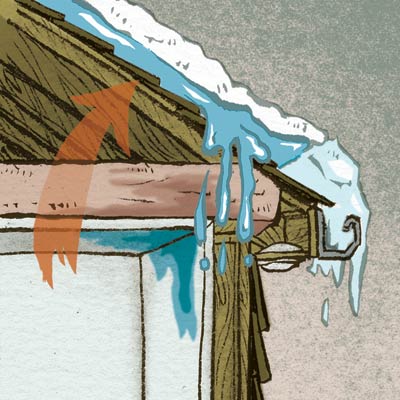
Source: ThisOldHouse
Heat can leak out of your attic and melt the snow on your roof in many ways:
- Poor attic insulation
- According to energy.gov, your attic insulation should be between R38 and R60 (the higher the R-value, the greater the insulation).
- In addition to preventing ice dams, proper attic insulation and home sealing can save you up to 20% on your heating and colling costs.
- Not enough fireplace and chimney insulation
- Leaky and inefficient ductwork in your attic
- Air leaks in upper story ceiling fans and recessed lighting
- Poor attic door insulation
- Make sure the attic hatch/door has good weatherstripping that creates a tight seal.
As you can see, there are many different contributing factors that create an ice dam. The best thing you can do is look for permanent solutions like increasing ventilation, adding insulation, and sealing and caulking air leaks in your ductwork and attic. The key to preventing ice dams from accumulating is by keeping your entire roof cold, not just the eaves. This is accomplished by preventing as much heated, conditioned air from entering your attic as possible. Inspect your attic and upper story ceiling for any cracks.
Quick Ice Dam Prevention:
There is an easy trick to prevent ice dams this winter: fill nylon stockings with calcium chloride ice melt and place along the edges of your roof and around your gutters.
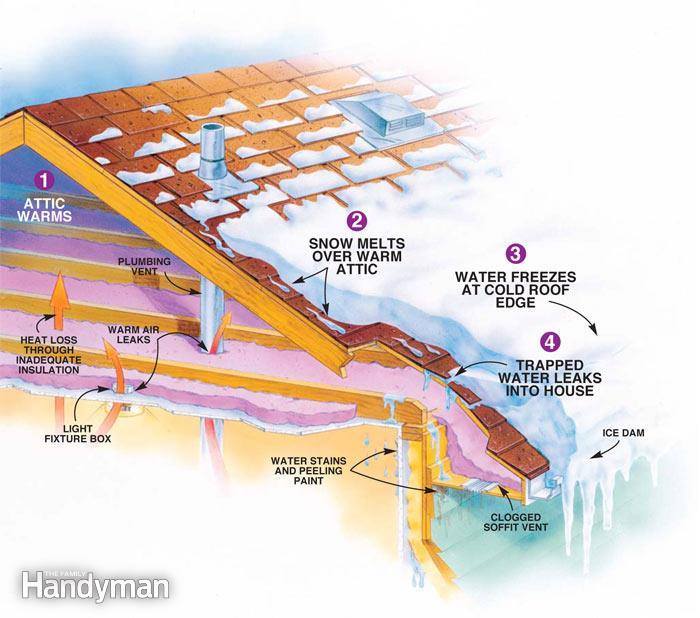
Source: familyhandyman.com
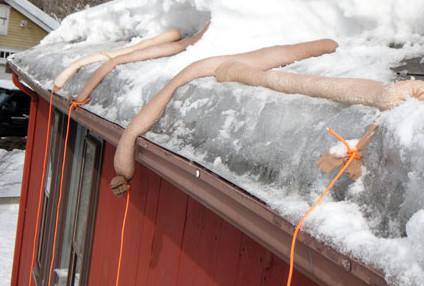
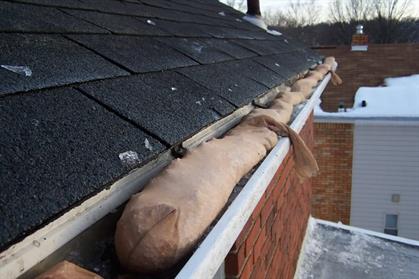
For more information watch this video:
Long-term tips: improve attic insulation, check that soffits are unobstructed, seal structural leaks around walls/ceiling/attic, and weatherstrip your attic hatch.
Here is a map that shows Common Air Leaks:
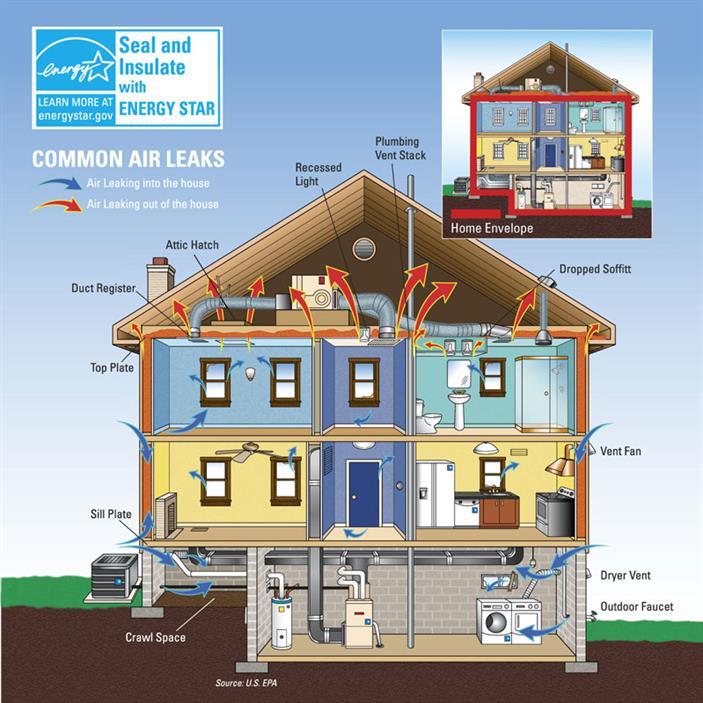
It is important to winterize your entire home and check for air leaks around the exterior of your home while you are at it. If you combined all the air leaks in the average home, you would have a hole with a diameter of 3 feet in an exterior wall!
In the meantime, however, there are many quick, temporary fixes for ice dams, including heated cables and other ways to deice your eaves.
Most roofs are designed to withstand a significant amount of snowfall, but when the snow is very compact and wet, it can sometimes be too great of a burden for your roof to handle. With older roofs especially, it is advised that you speak with a roofing contractor. They will have a better answer for whether or not your roof can handle the load and will be able to clear your roof and ice dams safely.
To schedule HVAC, Plumbing, and Electrical maintenance/repair or installation, contact the professionals at Gold Medal Service. We’ll be there with our same day service guarantee!
Give us a call today at 1-732-638-4317 or schedule an appointment online!
And don’t forget to follow us on Facebook and Twitter for more useful information and how-to’s.


